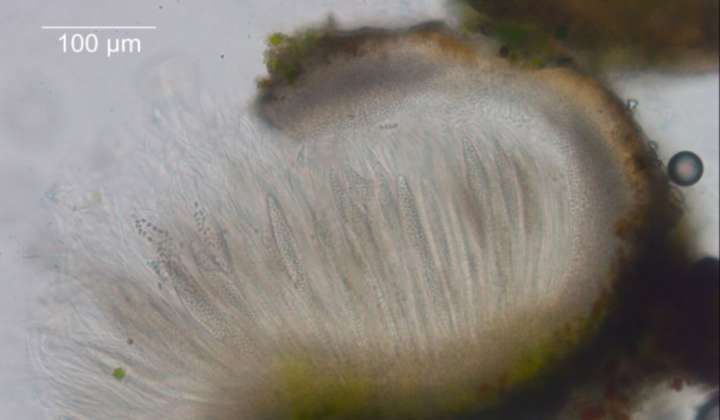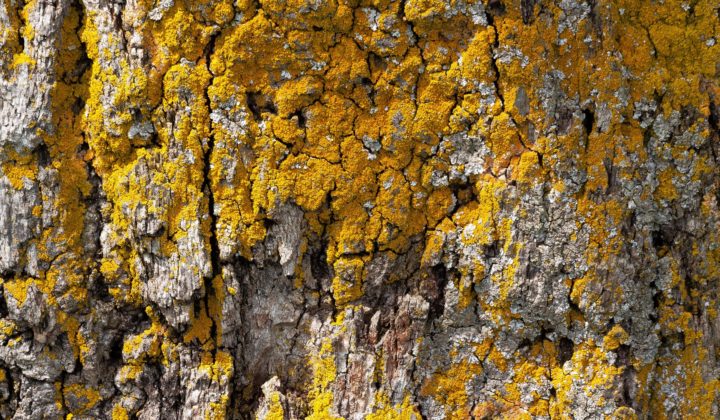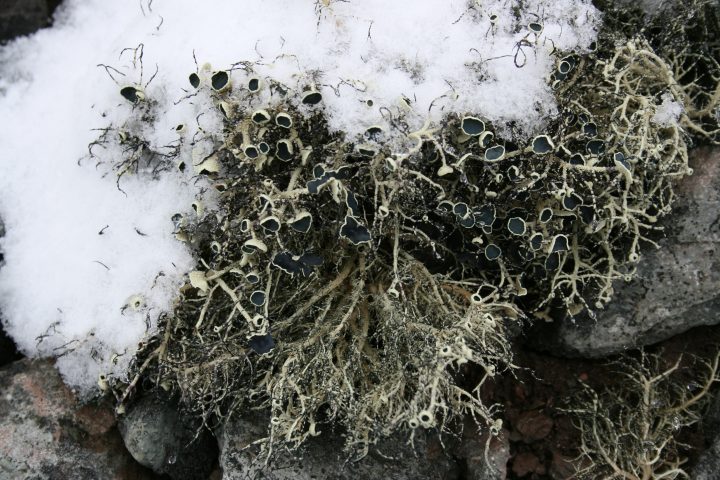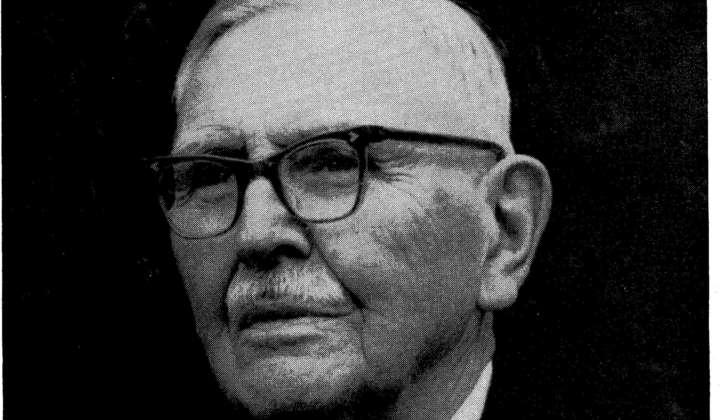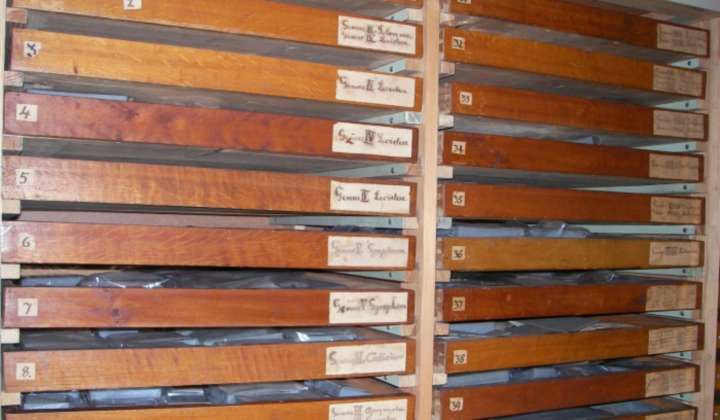As a Research Institute of the G.D.R. (1953-1990)
Only after World War II the museum was established as a research institute (beginning in 1953) and again became an important centre of regional nature study. Hence, important collections were entrusted to it again, as e.g. the bryophyte herbarium of Heinz Eckardt comprising 5,000 specimens and the lichen herbarium of Alwin Schade comprising 9,000 specimens. It was also the merit of A. Schade to identify the lichen herbarium of C.G. Mosig and to support by his expertise its saving by transfer to the Museum of Natural History. In addition to its importance as a document of historical lichen vegetation of our region, Schade also recognised the possible presence of type material of taxa described by Acharius in this collection (Schade in Abh. Ber. Naturkundemus. Görlitz 41/11), but was not able to deal with this question more intensively because of his age.
fig. left: Dr h.c. Alwin Schade (1881-1976), mentor and most important contributor of the lichen herbarium during the 1960ies/70ies (image taken from Abh. Ber. Naturkundemus. Görlitz 51/9)
Schade was a teacher not employed at our museum, but was an active honorary contributor. He published 10 papers in the Museum’s journal “Abhandlungen und Berichte”, mainly dealing with the genus Cladonia, the occurrence of its species in the region of Upper Lusatia and their interference by pollutants originating from the new power stations built in the 1960ies. In addition to Schade’s own gatherings, his herbarium contains also many specimens sent to him by a magnitude of colleages from Germany as well as from overseas. Via his former pupil J.C.E. Riotte, who emigrated during the Nazi era and became not only an Archimandrite of the Ukrainian Church in North America, but also an authority in North American entomology, many American lichen specimens have come to our collections. Alwin Schade died in 1976.
Beginning with the 1980ies, a growing number of specimens of cryptogamic plants came to our collections in connexion with research activities in soil zoology. In addition to material from the region, in particular the gatherings of the Görlitz zoo director Axel Gebauer from the 29th Soviet Antarctic expedition in 1984/85 (fig. left: Usnea aurantiacoatra (Jacq.) Bory from King George Island) were studied regarding their invertebrate fauna. However, there were no personal capacities to deal with the plant material at that time.
For many years an important research topic of our museum was the influence of industrial immissions on the biota of our region, which was known as the “Black Triangle” in the 20th century because of its extreme environmental pollution. Occasionally this included lichen mapping during practical courses for students.
As a state museum of the free state of Saxony (1990-2008)
In the 1990ies the moss collection was revised, newly arranged and enriched by Markus Reimann. The lichen collection was dealt with from 2002 to 2004 by Volker Otte. On this occasion, the considerable number of type specimens (approx. 200) in the lichen herbarium of C.G. Mosig was recognised and the missing catalogue of this collection written in 1829 was rediscovered. It was also possible to work up the Antarctic collections, which provided revised material for comparison purposes as well as taxonomic expertise for subsequent research activities in the Antarctic region.
Subsequently V. Otte worked in several projects at the museum. Besides aspects of biodiversity changes of cryptogams in the closer region after the considerable improvement of the environmental situation, his interests focused on biocenotic interactions between cryptogamic plants and invertebrate animals, comparing the situation in the anthropogenously heavily affected Neiße Euroregion and the little affected western Caucasus.
A part of the Senckenberg Network (2009 onward)
With the incorporation of the museum into the Senckenberg network the section of lichenology and bryology was established, whose head is Volker Otte since 1st April, 2009. Collection housing and working conditions have much improved since January 2010 as a result of moving of the cryptogamic sections to their new domicile in the Jakobstraße (fig. right). After a further move, into the building of the tax authority at the “Sonnenplan” in 2013, we are looking forward now to the move to our final location in the new buiding of our museum expected for 2022.
For our current activities, please read the other pages of our internet presentation.

